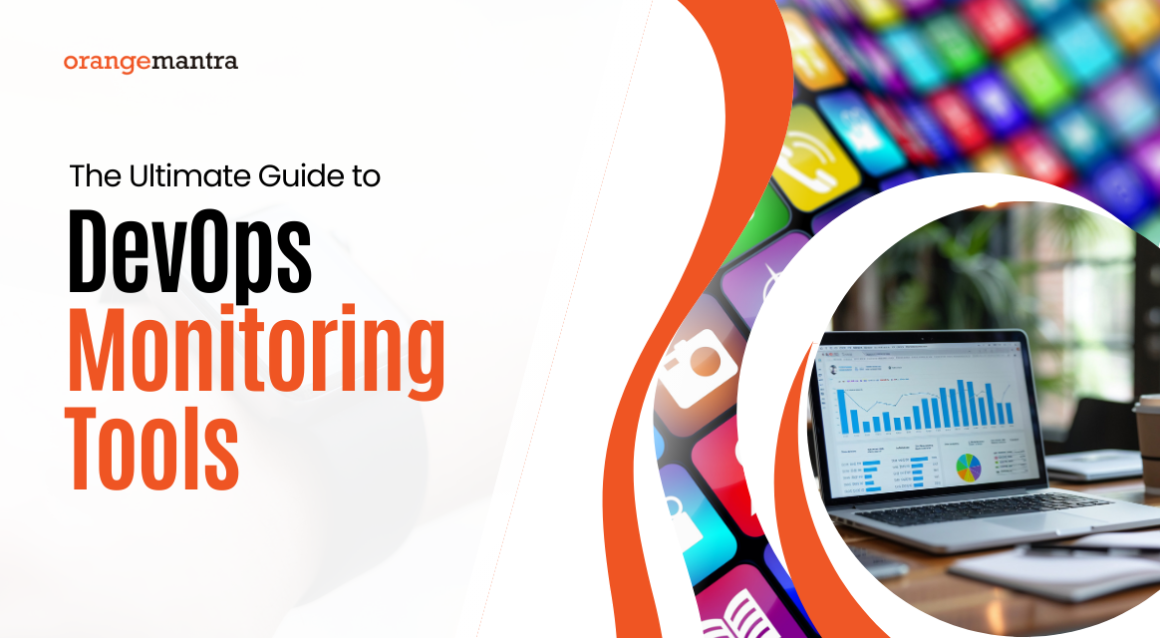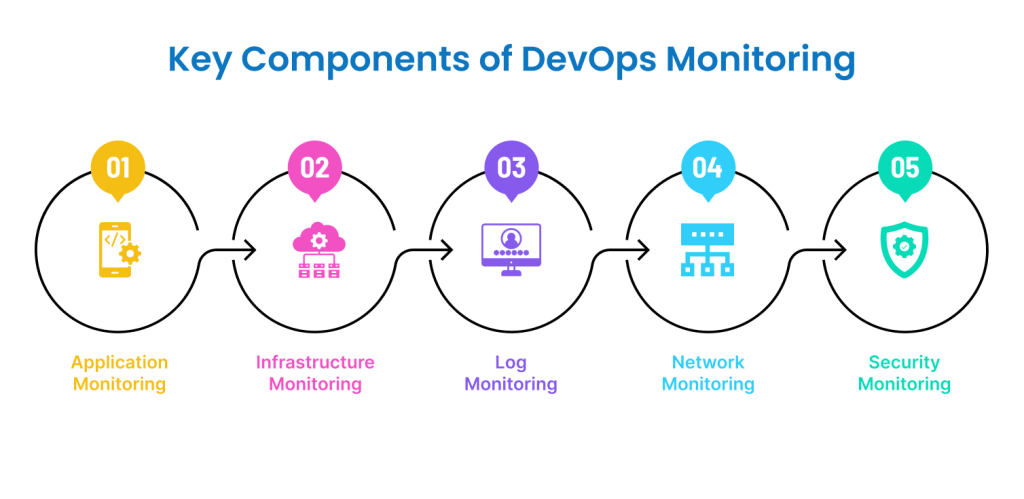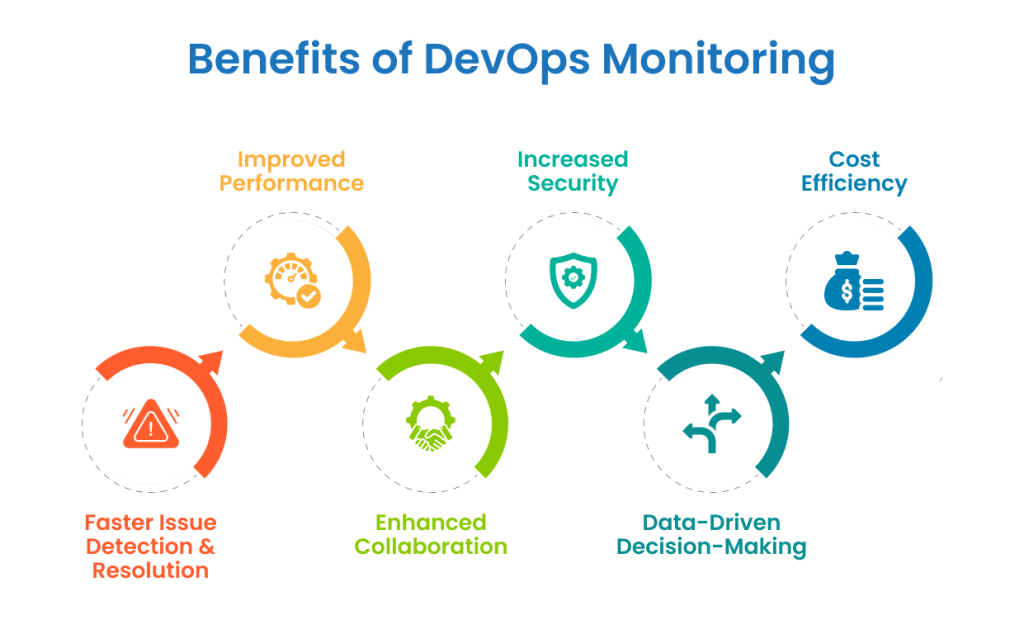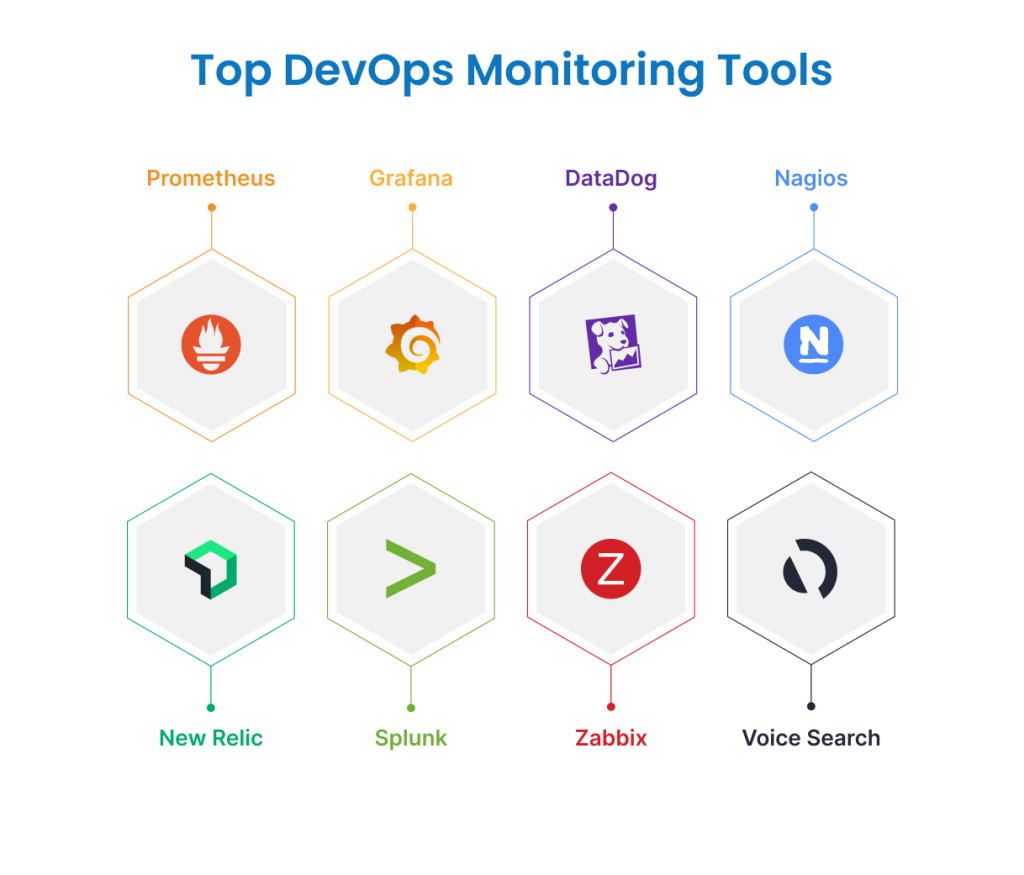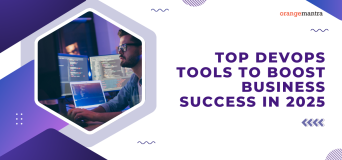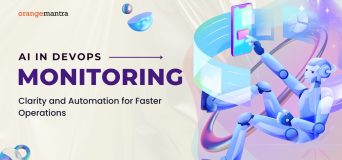As the pace of IT development increases, which brings a higher requirement for application and system availability and stability. Here the importance of DevOps monitoring comes into picture in ascertaining the health of both software and system thereby ensuring overall integrity. DevOps monitoring and its techniques foster Auto-Discovery, Continuous Learning & Optimization, and smooth operation for better supporting IT services. No matter whether you need to advanced your DevOps solutions, address performance issues or work with collaboration, monitoring is the key to effectiveness.
The blog covers different DevOps monitoring tools, DevOps monitoring strategies and different opportunities that organizations can harness when they hire DevOps engineers to incorporate advanced monitoring into their operations.
Introduction to DevOps Monitoring
DevOps monitoring is a process of monitoring continuous delivery application and infrastructures throughout the application developmental process. When compared to conventional IT monitoring, DevOps monitoring services don’t wait for something to go wrong, but rather, they offer information to the teams which prevent common problems from reaching the user.
The blog adds that all the above practices are critical in facilitating DevOps. While monitoring is not limited to error detection, but enables performance optimization, as well as security and compliance, which makes it an object of DevOps automation and DevOps assessment.
Key Components of DevOps Monitoring
DevOps monitoring incorporates multiple domains relating to both the application and the infrastructure it runs on. Here are the core components that organizations should focus on:
Application Monitoring: Monitors the application usage, availability and response time to check if the client experience is excellent.
Infrastructure Monitoring: Its availability aspect oversees servers health, databases, and the overall status of any networks and application backbones.
Log Monitoring: Collects and maintains log data to identify problems, monitor patterns and ensure means to fix them are not time consuming.
Network Monitoring: Manages the integrity of the network, supervises the traffic flow and points at the delays.
Security Monitoring: Provides an idea of threats, risks, and incidents that are possible, along with being a part of the broader DevSecOps services that may be offered within an organization or company.
Each component has a crucial role to deliver high-quality, easy to scale applications by ensuring that both software and infrastructure are always in top-notch condition.
Best Practices for DevOps Monitoring
For effective DevOps implementation, it is critical to follow a set of best practices to make monitoring more efficient and valuable.
Integrate Monitoring into the CI/CD Pipeline: It has been advised that monitoring should be a part of the many-forming CI/CD process. This enables teams to observe, at the highest level application performance and infrastructure health in the development cycle.
Automate Monitoring Alerts: Employ DevOps automation to configure different applications for notification of unusual activity of the application and it’s infrastructures. This assists teams to address any issues that may be present in their environment much more effectively.
Use Real-Time Monitoring and Analytics: The current status enables organizations to be on alert for any fault and be in a position to respond to it in a bid to delay its impacts and solve them in the shortest time possible.
Focus on End-User Experience: Manage indexes with a direct impact on the end user, for instance; application response times and page load.
Collaborate Across Teams: Hire DevOps engineers who shall be in a position to collaborate with the development, operations, and security directors to make sure that monitoring is successful across all regions of operations.
Monitor Modern Architectures (Microservices, Containers): As companies modernize their solutions, applications, and systems into microservices and containers, it becomes increasingly important and difficult to monitor those.
Regular Audits and DevOps Assessment: As you implement the monitoring systems and best practices described here, you should periodically evaluate their effectiveness and find out ways that you can enhance their performance.
Benefits of DevOps Monitoring
Implementing a comprehensive DevOps monitoring strategy brings a wide range of benefits to organizations:
Faster Issue Detection and Resolution: Real-time information provided by monitoring systems helps various teams prevent possible problem instances from escalating, meaning minimal system unavailability and enhanced dependability.
Improved Performance: Physical and logical monitoring assists in the continuous fine tuning of application performance and the how our infrastructure is used by adding to the overall usability that users experience.
Enhanced Collaboration: Monitoring gives timely data that is useful for the development, operations, and security group and contributes to improved interaction.
Increased Security: When information security monitoring is incorporated into DevSecOps services, the various teams are able to identify the susceptibilities and handle them before there can be a breach.
Data-Driven Decision-Making: As we mentioned before, tracking capabilities allow teams to make decisions concerning scaling, resource content, and new features.
Cost Efficiency: By using the DevOps monitoring services, companies are able to detect the waste causes thus leading to cutting down the costs of resources.
Challenges in DevOps Monitoring
While the benefits of monitoring are clear, there are also some challenges that organizations face:
Data Overload: If monitoring tools are used to collect data, the number of files and entries may be incredibly large. It is thus imperative organizations have ways of sorting, and ranking this information.
Tool Fragmentation: With such a rich selection of monitoring tools, their integration into a single system is quite challenging.
Dynamic Infrastructure: Supervising containerized and cloud-native setups is challenging because of the short lifecycle of containers and microservices.
Consistent Monitoring The ability to provide consistent monitoring for the development, staging, production environment is more difficult but critical for reliable operations.
AI in DevOps Monitoring: The Future of Automation
Artificial intelligence (AI) is revolutionizing DevOps monitoring. With AI in DevOps, failures can be predicted, incidents can be self-resolved, and resources can be optimized. AI in DevOps monitoring brings introduction of predictive analytics that helps the teams to recognize trends and tendencies in the system behavior, and with its help identify future problems before they occur.
In addition, it is possible to have more precise alerts and analysis from the algorithm based on the extensive datasets of machine learning. When solutions are constantly moving forward, AI in DevOps will become much more important in the monitoring and decision making process.
Top DevOps Monitoring Tools
Selecting the right DevOps monitoring tools is highly important to ensure visibility and control over your applications and infrastructure. We have discussed some of the most popular DevOps monitoring tools for your understanding.
Prometheus
Prometheus is an open-source monitoring system and alerting tool for middle-ware based systems meant mainly for reliability in monitoring the DevOps deployed ever-changing fashionable cloud-native applications. While it is great for metrics collection, it can be best utilized in the containerized setting.
Grafana
Grafana is an open-source data visualization tools which provide a wide range of ways to monitor and analyze data in real time. Despite its compatibility with Prometheus, it can be effortlessly integrated with virtually all data sources.
Datadog
Datadog is a cloud-native application performance monitoring tool that supports environments from infrastructure and application layers to logs and user experience. It is more famous for its excellent integration and ability to expand.
Nagios
Nagios has been in existence for quite a long time and is among the most basic and efficient open source infrastructure monitoring tools, it is highly flexible and has a very active plugin library. It’s especially beneficial when it comes to managing structures such as the infrastructure and the networks.
New Relic
New Relic is an application performance monitoring tool that measures real-time performance of applications, provides detailed analysis of code and application level issues as well as detailed application analysis in real time for the entire stack.
Splunk
Splunk is an effective tool for analyzing large volumes of machine data and logs, delivering in-depth operational insights. It is flexible, extensible, and can process big data; it is ideal for businesses that rely heavily on data.
Zabbix
Zabbix is the propriety tool for real time application, network, and server monitoring. It provides effective alarming and much more supported platforms. Best For: Infrastructure monitoring especially in applications scenarios where an organization is running both traditional or legacy architecture and new cloud environments.
AppDynamics
These are core attributes of a reliable Application Performance Monitoring tool and hence, AppDynamics is a strong application performance monitoring tool that helps organizations identify the key issues affecting their applications’ performance. Application monitoring with rich analytical information and code analysis for enterprises wishing to provide better user experience to their clients.
Frequently Asked Questions
Q1. Could you assist us in implementing DevOps monitoring into our current system?
Yes, our DevOps implementation services also cover a smooth integration of monitoring solutions to the current setup. This means we help you put the right measures in place to observe application, IT structures, and security issues without affecting your business.
Q2. Do you supply automated monitoring package?
Yes, we have automation services as part of our DevOps where we do set up of automated monitoring. Our team sets up notification and auto-response tools to quickly solve problems and save time.
Q3. What concerning migrations and monitoring of old systems can your company provide?
Indeed we have specializations in DevOps implementation for legacy systems. We are capable of providing you with expert evaluation of your existing systems so we can assist in transferring them into more updated monitoring systems without having to cause delays and are also capable of providing you with continuous monitoring of their performance.
Wrapping Up
This paper argues that DevOps monitoring is a key function in the DevOps model. When using the right tools and observing the best practices and AI-based monitoring, applications and infrastructure will always run efficiently. To achieve faster issue resolution and enhance your DevOps efforts, prioritize investing in a robust monitoring system.
